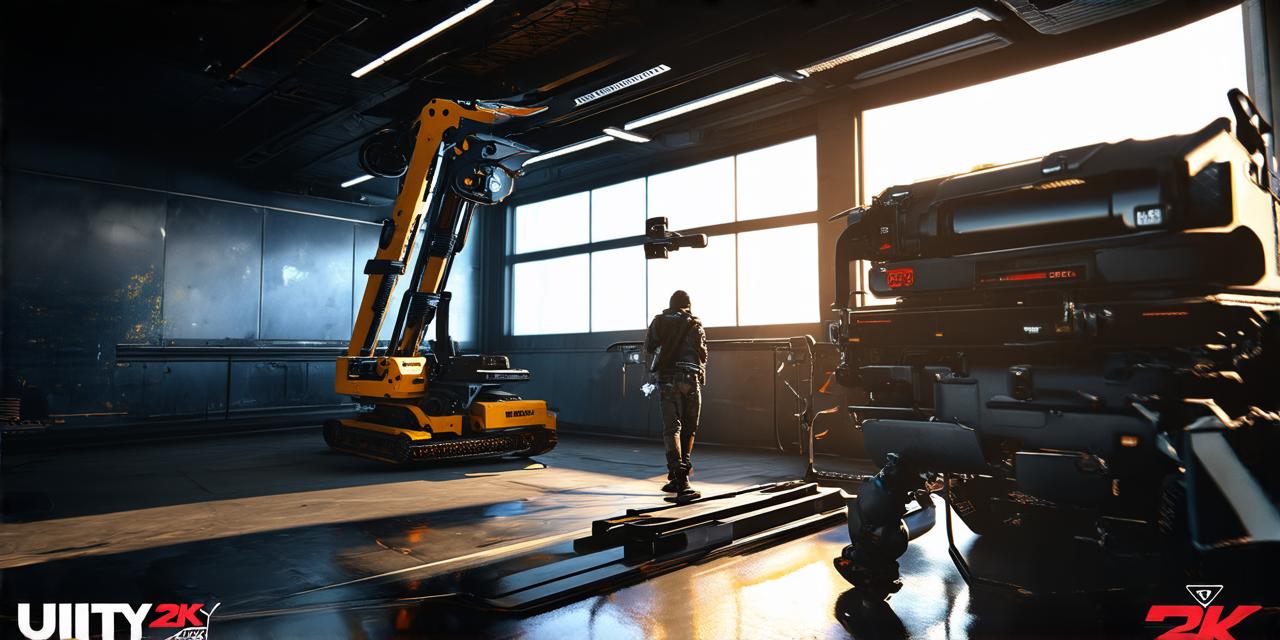
Introduction:
Creating a 3D game can be an exciting and challenging project, especially if you’re a newcomer to game development. One of the most popular and versatile tools available for creating 3D games is Unity, a cross-platform game engine that allows developers to create games for various platforms, including PC, mobile devices, and consoles. In this article, we’ll take a closer look at how to create a 3D game using Unity, from setting up your development environment to creating your game’s assets, writing code, and testing your game.
1. Setting Up Your Development Environment:
Before you can start creating your game, you need to set up your development environment. The first step is to download and install Unity on your computer. You can find the latest version of Unity on the official website (https://unity.com/products/unity). Once you’ve installed Unity, you’ll need to create a new project. To do this, open Unity and click on "New Project" in the top left-hand corner of the screen.
2. Creating Your Game’s Assets:
The next step is to start creating your game’s assets, including characters, environments, and objects. Unity provides a variety of tools for creating 3D models, animations, and textures. You can use Unity’s built-in 3D modeling tools, such as the Sculpt tool, or import 3D models from external software like Blender or Maya. Once you have your assets created, you’ll need to import them into Unity. To do this, go to Assets > Import Package in the top menu and select the package file containing your assets.
3. Writing Code:
Unity uses C as its primary programming language, so you’ll need to learn C if you haven’t already. You can find plenty of resources online for learning C, including tutorials and documentation on Unity’s official website. Once you’re familiar with C, you can start writing code for your game. Unity provides a variety of scripting templates that you can use to create basic functionality like player movement and enemy behavior.
4. Testing Your Game:
Testing is an essential part of the development process, and it’s important to test your game regularly as you build it. Unity provides several tools for testing your game, including the Play button in the top left-hand corner of the screen, which allows you to run your game directly from Unity. You can also use Unity’s built-in debugging tools to identify and fix any issues that arise during testing.
5. Optimizing Your Game:
As you build your game, it’s important to keep performance in mind. Unity provides several tools for optimizing your game’s performance, including the profiler, which allows you to identify and fix performance bottlenecks in your code. You can also use Unity’s built-in LOD (Level of Detail) system to improve performance by reducing the number of polygons that need to be rendered on screen.
6. Publishing Your Game:
Once you’ve finished building your game, it’s time to publish it. Unity provides several options for publishing your game, including PC, mobile devices, and consoles. To publish your game, go to Assets > Build Settings in the top menu and select the platform(s) where you want to publish your game. Follow the prompts to configure your build settings and upload your game to the appropriate app store or distribution platform.
Case Study: Creating a 3D Puzzle Game with Unity
Let’s take a closer look at an example of creating a 3D puzzle game using Unity. The game is called "Puzzle Palace," and it involves solving puzzles by placing different objects in the correct location in a room. To create this game, we followed the steps outlined above, starting with setting up our development environment and creating our game’s assets.
1. Setting Up Our Development Environment:
We downloaded and installed Unity on our computer and created a new project called "Puzzle Palace." We then imported several 3D models into our project, including the puzzle room, various objects that the player can interact with, and some textures for the game’s surfaces.
2. Creating Our Game’s Assets:
We used Unity’s built-in 3D modeling tools to create some of the more complex objects in the game, such as the puzzle pieces. We also created several animations for the game’s characters, including walking and jumping animations. Finally, we imported several textures into our project, including images for the puzzle room’s walls and floors.
3. Writing Code:
We learned C and started writing code for our game. We used Unity’s scripting templates to create basic functionality like player movement and object interaction. We also wrote custom scripts to handle more complex tasks like puzzle solving and scorekeeping.
4. Testing Our Game:
We tested our game regularly as we built it, using Unity’s built-in debugging tools to identify and fix any issues that arose during testing. We also used the Play button in the top left-hand corner of the screen to run our game directly from Unity.
5. Optimizing Our Game:
We used the profiler to identify performance bottlenecks in our code and optimized our game’s LOD system to improve performance. We also used Unity’s particle system to create some of the game’s visual effects, such as smoke and sparks when the player solves a puzzle.
6. Publishing Our Game:
We published our game on PC and mobile devices using Unity’s built-in publishing tools. We followed the prompts to configure our build settings and upload our game to the appropriate app stores. We also set up a website where players can download the game and view instructions for how to play.
FAQs:
- What programming language does Unity use?
Unity uses C as its primary programming language. - Can I import 3D models from external software into Unity?
Yes, you can import 3D models from external software like Blender or Maya into Unity using the Import Package feature in the top menu. - What is LOD in Unity?
LOD stands for Level of Detail and it’s a system in Unity that allows you to reduce the number of polygons that need to be rendered on screen, improving performance. - How do I publish my game using Unity?
To publish your game using Unity, go to Assets > Build Settings in the top menu and select the platform(s) where you want to publish your game. Follow the prompts to configure your build settings and upload your game to the appropriate app store or distribution platform.Conclusion:

Creating a 3D game can be a challenging but rewarding project, especially if you’re using Unity as your game engine. By following the steps outlined in this article and taking advantage of Unity’s powerful tools and features, you can create a high-quality game that will engage and entertain players across various platforms. Whether you’re new to game development or an experienced programmer, Unity has something for everyone.

